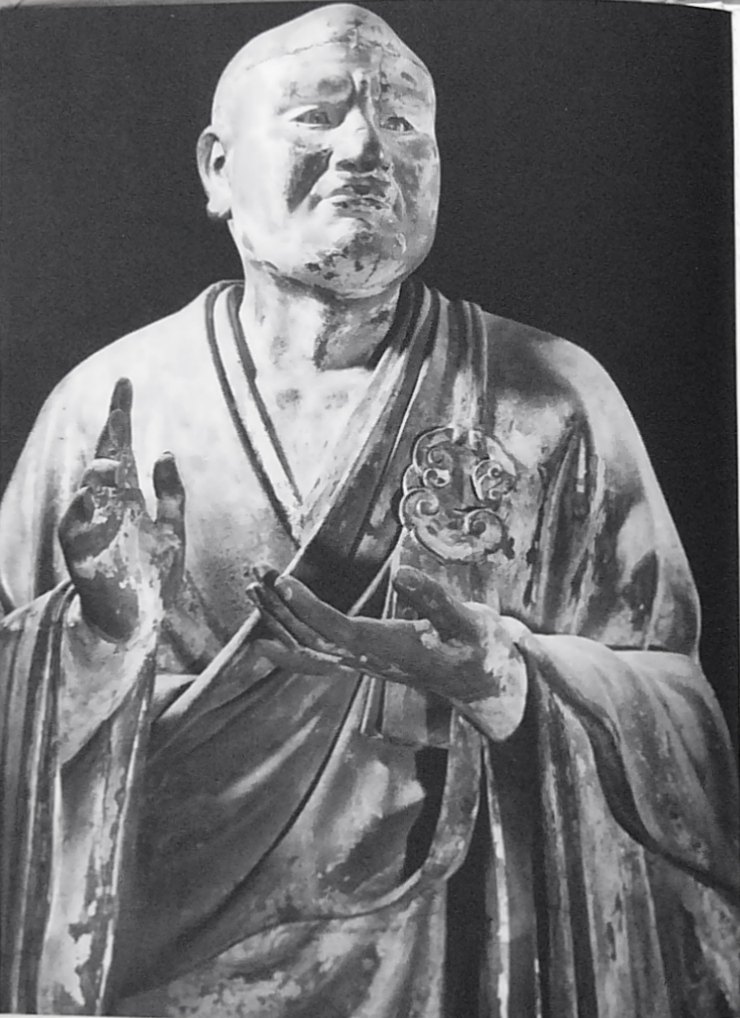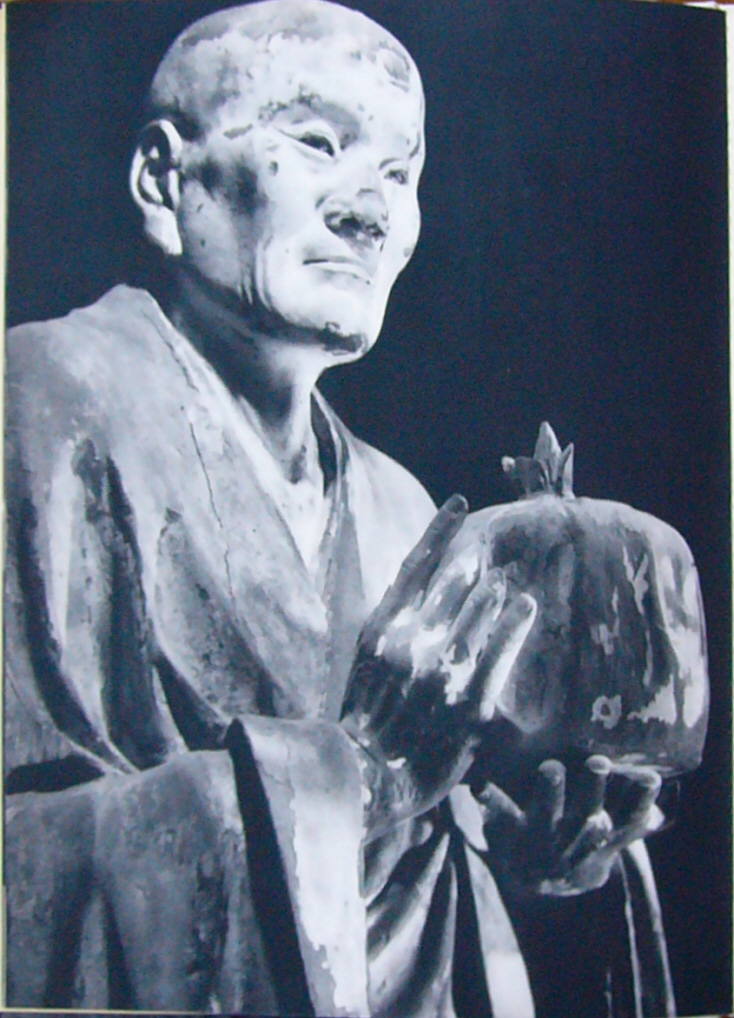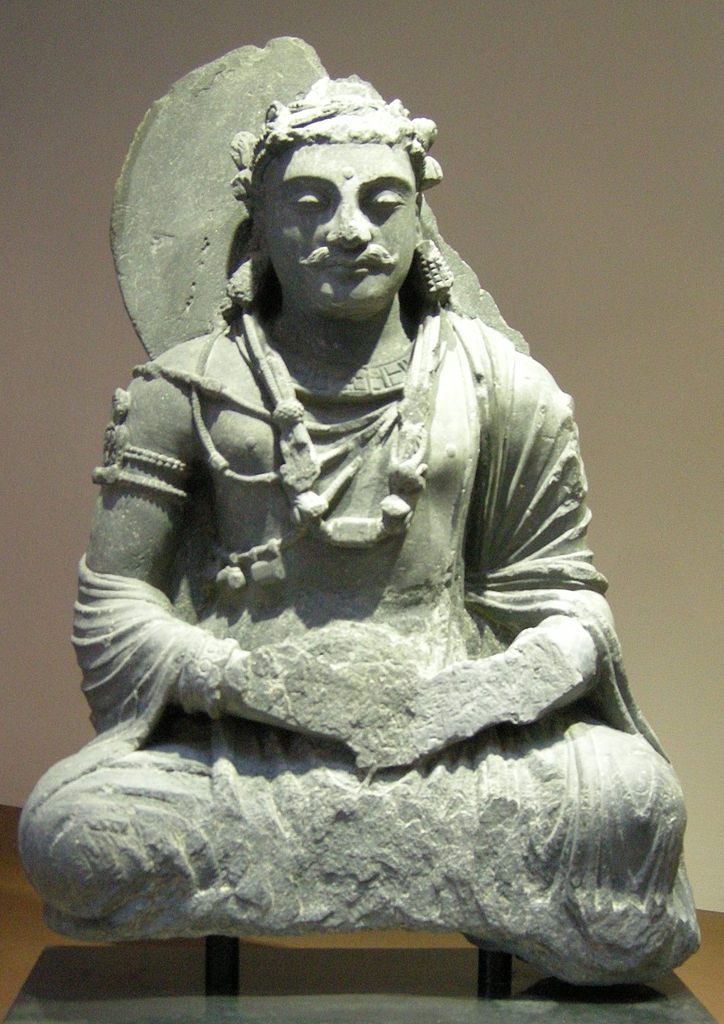Non-dual consciousness as ultimate reality
Yogacara as a doctrine of consciousness

Though the name Yogacara (“Practice of Yoga”) appears to have been the earliest name of the school, it is Yogacara’s doctrine of consciousness as the basis for the construction of the apparently “external” objects we encounter in the world, that attracted most interest as well as controversy among Mahayana practitioners and scholars. Nagarjuna had equated emptiness with co-dependent origination (pratitya-samutpada), that is, an absence of inherent existence (svabhava). Yogacara saw it as the non-dual alaya consciousness, that is, an absence of duality. This led to the Yogacara school being known under a number of alternative names, namely, Vijnanavada, “Consciousness Teaching,”, as well as the more descriptive “Consciousness Only” (vijnaptimatra) or “Mind/Thought/Representation Only” (cittamatra) school. Note here that the various words used in English – mind, consciousness, thought, representation – are translations of only two Sanskrit terms – vijnana and citta – which are more or less equivalent for the Yogacaras.
Whereas the Madhyamikas had focused on establishing emptiness as a quality shared by all “things,” the Yogacaras’ focus on consciousness, specifically, the non-dual alaya consciousness, was sustained by the wish to provide emptiness with an underlying “basis” that “really, absolutely exists” (Tibetan thinker Mi pham quoted by Paul Williams).
The alaya consciousness as Yogacara’s signature concept
Harvey writes: “In previous Abhidharma, consciousness (Skt vijnana) …was seen to be of seven types: consciousness related to each of the five physical senses, mind-consciousness, and mind-organ (Skt manas) with the latter processing the input from the senses, often in a way skewed by the “I am” conceit.” The English “mind” here covers both a sixth consciousness, more or less on an equal footing with the five physical senses, and an “organ” organising the input from the six outer levels of consciousness into a “meaningful” interpretation of our experience of the world.
For Yogacara, however, the six consciousnesses as organised into a coherent representation by manas, only refer to “the surface of the mind,” a series of outer layers engaged in the activity of representing reality. Yogacara contends that there is a deeper level of consciousness which operates as the “basis” (asraya) of the active layers. “Devoid of purposive activity and only indistinctly aware of objects, it is an underlying unconscious level of mind known as alaya-vijnana, the “storehouse consciousness” (Harvey). What this deeper consciousness “stores” is the accumulated karmic material shaping the way we see the world.
Strictly speaking the alaya consciousness hardly merits its name of eight layer of consciousness since it is unconscious, that is, it is beyond the reach of ordinary (reflective) consciousness. The Lankavatara Sutra sees the outermost active layer of consciousness as “related to the alaya as waves are related to the ocean; they are not really separate from it, but are simply perturbations in it. These perturbations do not affect the ever-still depths of the ocean-like alaya, though” (Harvey).

Harvey explains that “alaya acts as the basis of the active consciousnesses by actually projecting them out of itself. The Yogacara, then, regards a person’s perception of the world as a product of the unconscious mind.” The usual view is that our consciousness mirrors things existing in a world perceived as external to us. Yogacara holds that the deeper layer of consciousness is where the things we see are generated, before being projected outside, seemingly in front of, or around us. Since the alaya is the repository of karmic “seeds,” our view of the world is distorted. “In any situation, we only really notice what our mind is attuned to perceive, be this something that interests us, threatens us, excites us or disgusts us. We only ever get “edited highlights” of the possible field of perception” (Harvey). In other words, the way we “organise” our perceptions is shaped by the sort of person we are or, rather, the sort of person our karmic past has caused us to become. As this meaningful interpretation of reality is projected outside us, most of us do not realise that it actually comes from our deepest consciousness, which, for this reason, is described as unconscious. This is what Nagarjuna regarded as a “cognitive default,” whereby we superimpose substance over the things we see. The projection of things outside of us is another way of describing the process whereby substance is superimposed on “things,” turning them into objects which we crave and become attached to.
The “mechanics” of consciousness
“When a person performs actions, or karmas, traces are left on his unconscious: “seeds” of future karmic effects sink into the alaya, a receptacle which actively stores them, ready to later mature” (Harvey). Sanskrit Karma means “action” as such. All actions, whether ethically good or bad, leave karmic “seeds” in the alaya. The word “seed” (bija) is here to be taken in the sense of potential to ripen into effects – it is an “energy” rather than a “thing.” The “seeds” “reproduce themselves over time, thus accounting for the continuity of personality through death and periods of unconsciousness, when the seven active consciousnesses are absent.” In the process of rebirth, the seeds flow from one body to another, and once in the new body ripen “in the form of the flow of experiences which consists of manas and the six consciousnesses, each orientated to it own type of “object,” of which it is a “representation.” It is manas, as a wave-like energy arising from the alaya that “splits the seamless flow of experience into an experiencing “subject” and an experienced “object,” or “grasper” and the “graspable.”
This “split” is what causes the duality of subject and object, that is, turns the stream of experiences generated by the non-dual alaya consciousness into a dualistic world of objects apparently located outside ourselves. Yogacara holds that the flow of experiences is “actually neither “internal” nor “external” – it just is” (Harvey). This “is” is, however, an existence as “representation,” as “our actual ‘world’ is merely ‘thought,’ that is, ‘a representation’ (vijnapti) produced by consciousness” (Harvey).
Meditation used as a phenomenological method

Though the ethical rules contained in the Eightfold Path are still to be observed, Yogacaras rely less on renunciation, and more on meditation used as a phenomenological method to undermine the mistaken projection of experiences as external entities. Once one becomes aware of the “mechanics” of consciouness, we can see through the “tricks” it plays on us. “The full realization of “representation-only” comes when the utter transcending of any “object” leads to the collapse of any notion of “subject,” which is merely its dualistic contrast” (Harvey). And with this, the craving and attachment associated with the belief in external objects, also collapse.
A clear echo of the above Yogacara teaching can be heard in the meditation guidance the Soto Zen priest Shunryu Suzuki gave to his disciples at the San Francisco Zen Center:
“It will take quite a long time before you find your calm, serene mind in your practice. Many sensations come, many thoughts or images arise, but they are just waves of your own mind. Nothing comes from outside your mind. Usually we think of our mind as receiving impressions and experiences from outside, but that is not a true understanding of our mind. The true understanding is that the mind includes everything; when you think something comes from outside it means only that something appears in your mind … You yourself make the waves in your mind. If you leave your mind as it is, it will become calm. This mind is called big mind.”
“Awakening” takes place when duality is overcome. In Yogacara terminology, it is called the attainment of the “unlimitedness of the Dharma-realm.” Shunryu Suzuki describes this realization in the following terms: “Water and waves are one. Big mind and small mind are one. When you understand your mind in this way, you have some security in your feeling. As your mind does not expect anything from outside, it is always filled. A mind with waves in it is not a disturbed mind, but actually an amplified one. Whatever you experience is an expression of big mind.”
The “reversal of the basis”

The Yogacara describes the final attainment in terms that became familiar centuries later during the well-known controversy opposing those who saw enlightenment as a sudden event and those who saw it as a gradual development. Harvey writes: “The final attainment comes suddenly, however, as a momentous spiritual transition, a shattering upheaval which takes place at the root of the mind – in alaya in its form as manas. This event is known as the “reversal of the basis” (asraya-paravrtti). It is where the usual flow of the wordly mind suddenly stops so that the six sensory consciousness no longer present information. Having stopped discriminating “objects” in the flow of the six consciousnesses, manas “turns round” from these and attains direct, intuitive, noble knowledge (arya-jnana) of alaya as its basis.” The alaya is said to be “no longer capable of carrying karmic ‘seeds’.” and “the intuition thus penetrates to the non-dual depths of alaya, the Dharma-realm which is ultimate reality, so that everything is seen as “thought-only” in the highest sense.” Nirvana is “the alaya-consciousness which is realized inwardly, after a reversal has taking place.”
The “immaculate consciousness” of the Shelun school of Yogacara
Both Harvey and Williams add that Paramartha, an Indian missionary who founded the Chinese Shelun School of Yogacara in the 6th century, claimed that, when the alaya consciousness is purified of all karmic seeds, “there remains, shining in it own purity, a ninth consciousness, the “immaculate consciousness” (amala-vijnana). This consciousness is the permanent, ultimate, true reality.” Williams comments that whether one posits an additional “pure” consciousness below an alaya tainted by karma, or see the alaya itself as the ultimate reality when purified, does not really make a difference. In both cases, the deeper pure level of consciousness is equated with emptiness, a position which has led to criticism being leveled at Yogacara that it had drifted into substantialism. Paramartha himself is known for his attraction to the doctrine of the tathatagarbha, a Mahayana school that has attracted even more criticism for its substantialist tendencies.
MADHYAMIKA AND YOGACARA
Harvey argues that “the “substantialism” of the Yogacaras is in fact more apparent than real, as their theories on mind are essentially tentative devices, “skilful means” to be used in conjunction with a series of meditations in leading the practitioner beyond all mental constructions … to a direct experience of the true nature of reality.” What mattered was to get the practitioner to this “direct experience” of the way things are in their “thusness,” or “suchness.”The Madhyamikas’ definition of emptiness as co-dependent origination had left “phenomena supported by nothing but other unsupported phenomena.” Though both Madhyamikas and Yogacaras were committed to the Middle Way, the Yogacaras felt that the Madhyamika view was too nihilistic, and sought a way to “support emptiness” on “something.” That could not be a substantial ground, as brahman was in Hinduism, but it did in the end look very much like a substantial ground – scholars do use the words “basis” and “substratum” when describing the alaya consciousness – since the alaya, and even more the immaculate consciousness of the Chelun school, are the deepest, most fundamental layers of consciousness. Though the “mechanics” of consciousness were presented as an “activity,” that is, not a “thing” but a set of dynamic processes involved in the construction of duality that were compared to “waves,” a need was felt to anchor these processes in an “ever-still” ocean-like unconscious level of consciousness that does feel like a substance. Hence, it is not surprising that Yogacara has been said to have erred on the side of the extreme of substantialism.
The Madhyamika and the Yogacara schools later developed into a “powerful syncretic school” (Harvey). The former contributed a radical affirmation of emptiness as sunyata as the core teaching of Buddhism. The latter brought a focus on consciousness, which opened the way to developments as Ch’an/Zen, where theoretical teachings are by and large jettisoned to be replaced by a phenomenological observation of consciousness in the context of meditation. Both the radical place given to emptiness and the focus on consciousness smoothed the way for a successful sinicisation of Buddhism in East Asia. The abstract ontological language of the Indian sutras was unfamiliar, and a challenge, to Buddhist followers in China and Japan. These, however, had been primed for an experiential approach by Daoism’s near similar understanding of reality as the Dao – where emptiness was known as wu (Jap. mu), reality itself was lived as a dynamism experienced in the present moment, and the mind understood as the heart-mind (Ch. xin, Jap. kokoro) – a blend of feeling and knowing.
Sources
Paul Williams – Mahayana Buddhism: The Doctrinal Foundations 2nd edition (2009)
Peter Harvey – An Introduction to Buddhism: Teachings, History and Practice (2013)
Shunryu Suzuki- Zen Mind, Beginner’s Mind (1970)
Anyone interested in a reformulation of Buddhist thought in the language of Western philosophy may have a look at my other blog, dedicated to Nishida Kitaro, Nishitani Keiji and Ueda Shizuteru:
https://thekyotoschoolofphilosophy.wordpress.com

